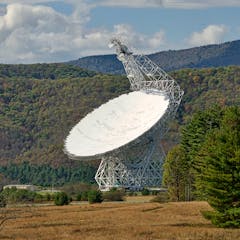
Articles on Astrophysics
Displaying 41 - 60 of 218 articles

Some physicists think we live in a multiverse, surrounded by universes not quite like our own. What does that mean for life?

The discovery of massive, early galaxies could force scientists to rethink how the first galaxies formed after the Big Bang.

Astronomers have found that mysterious dark energy may originate in black holes.

Black holes can have a mass equivalent to that of millions of suns. Other, smaller, black holes can combine the mass of Mount Everest into the size of an atom.

While we can’t see inside a black hole, we can spot the intensely bright glowing disc that surrounds one. Now, we might better understand why these discs appear to ‘twinkle’.

Can artificial intelligence transform the search for alien intelligence?

To understand this question, we need to travel back in time.

Gamma-ray bursts occur when a massive star explodes or when two neutron stars merge. A newly discovered burst has puzzled astronomers, as it lasted much longer than astronomers would have expected.

It has been one year since the launch of the James Webb Space Telescope and six months since the first pictures were released. Astronomers are already learning unexpected things about the early universe.

A new particle accelerator has just begun operation. It is the most powerful accelerator of its kind on Earth and will allow physicists to study some of the rarest matter in the universe.

The theory of gravity may need to be altered.

The binary star WR140 is surrounded by an astonishing array of nested shells of dust swirling into space.

An astrophysicist explains what wormholes are and how these theoretical space-time tunnels have popped up in the solutions to a set of decadesold equations.

Astronomers have discovered the first dormant black hole outside of the Milky Way. These black holes are not absorbing matter from a nearby star, making them incredibly hard to find.

Why is the universe 13.8 billion years old, but 93 billion light-years across? It’s all about how light travels through the cosmos.

NASA released five new images from the James Webb Space Telescope, revealing incredible details of ancient galaxies, stars and the presence of water in the atmosphere of a distant planet.

It has taken eight months to test and calibrate all of the instruments and modes of the James Webb Space Telescope. A scientist on the team explains what it took to get Webb up and running.

Astronomers studying fast radio bursts recently discovered one that repeats, has a persistent radio signal and originated in a galaxy much closer than it should have.

Sagittarius A* is a massive black hole at the center of the Milky Way. Now that astronomers have imaged it, they can begin to learn more about black holes within other galaxies across the universe.

The astronomy and astrophysics decadal survey for the 2020s lays out plans to search for life on distant planets, understand the formation of galaxies and solve deep mysteries of physics.





